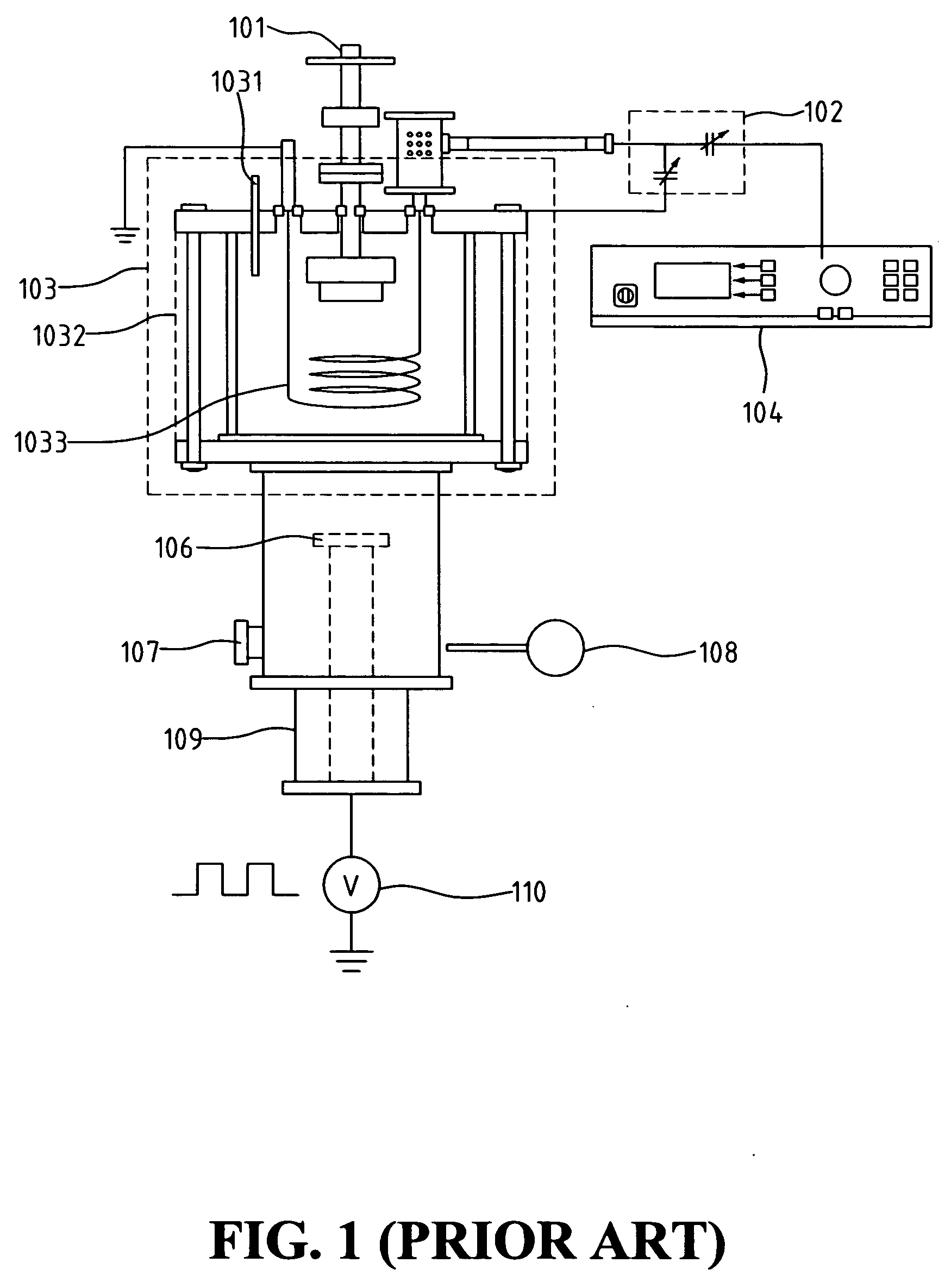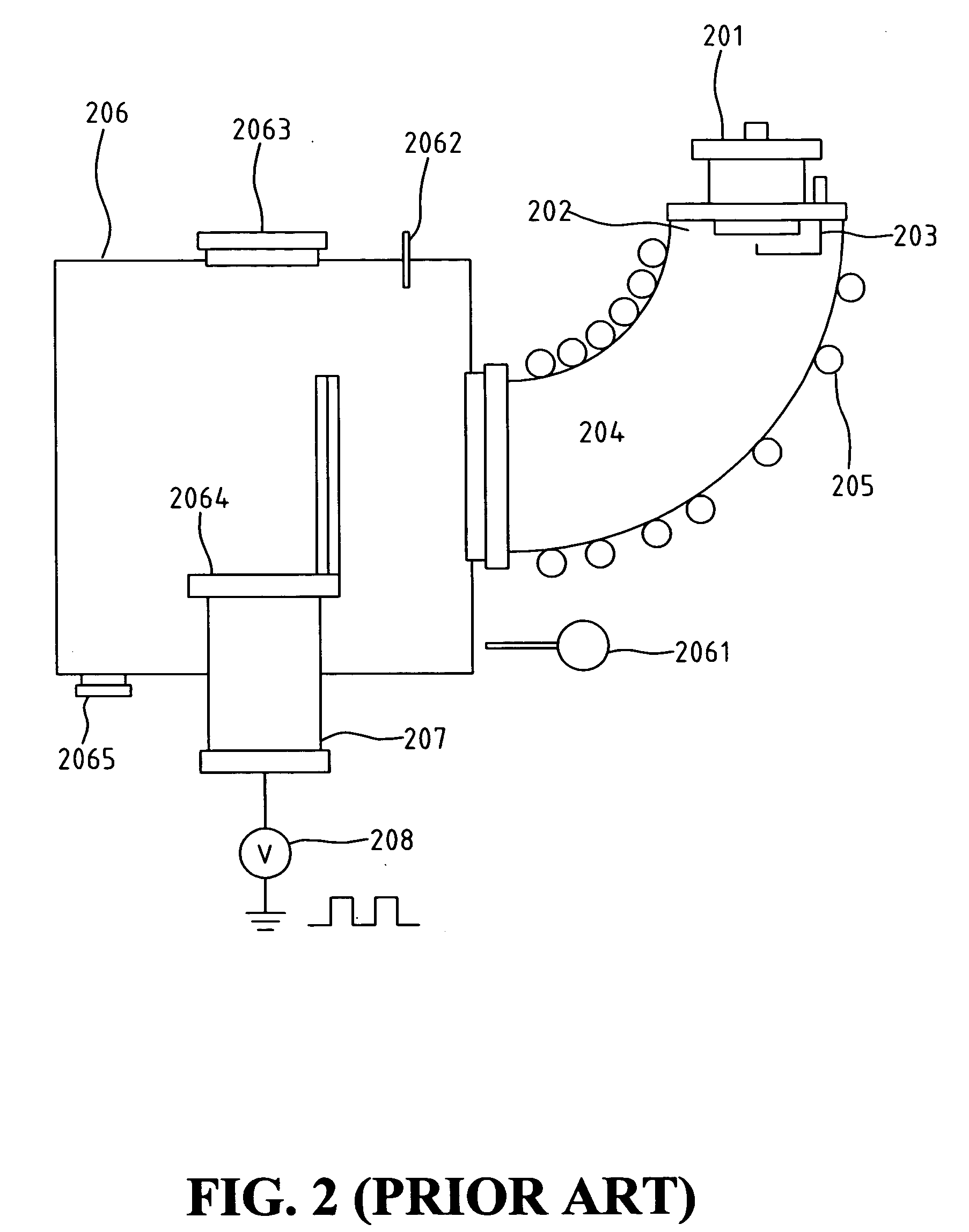Method for the surface activation on the metalization of electronic devices
- Summary
- Abstract
- Description
- Claims
- Application Information
AI Technical Summary
Benefits of technology
Problems solved by technology
Method used
Image
Examples
Example
[0023]FIG. 1 shows a schematic view of a plasma-immersion ion implantation system using an ionized sputter. Referring to FIG. 1, the plasma-immersion ion implantation system includes a sputtering gun 101, a matching box 102, a vacuum chamber 103 coupled with sputtering gun 101, further including a gas-in vent 1031, a RF shielding unit 1032 and a magnetic coil 1033 coupled with matching box 102, a RF power supply 104 coupled with matching box 102 to provide RF power to magnetic coil 1033, a wafer holder 106 for holding the wafer, a pumping 107, a vacuum gauge 108, a high voltage stage 109, and a negative pulsed bias 110 connected to high voltage stage 109. The Pd ions are sputtered from sputtering gun 101 at the top of vacuum chamber 103 and passing through magnetic coil 1033. Because the initial sputtered Pd plasma has a low ion density, the Pd atoms are ionized when passing through magnetic coil 1033. The ionized atoms are dragged by high voltage stage 109 connected to negative pul...
PUM
| Property | Measurement | Unit |
|---|---|---|
| Electric potential / voltage | aaaaa | aaaaa |
| Electric potential / voltage | aaaaa | aaaaa |
| Nanoscale particle size | aaaaa | aaaaa |
Abstract
Description
Claims
Application Information
 Login to View More
Login to View More - R&D
- Intellectual Property
- Life Sciences
- Materials
- Tech Scout
- Unparalleled Data Quality
- Higher Quality Content
- 60% Fewer Hallucinations
Browse by: Latest US Patents, China's latest patents, Technical Efficacy Thesaurus, Application Domain, Technology Topic, Popular Technical Reports.
© 2025 PatSnap. All rights reserved.Legal|Privacy policy|Modern Slavery Act Transparency Statement|Sitemap|About US| Contact US: help@patsnap.com



